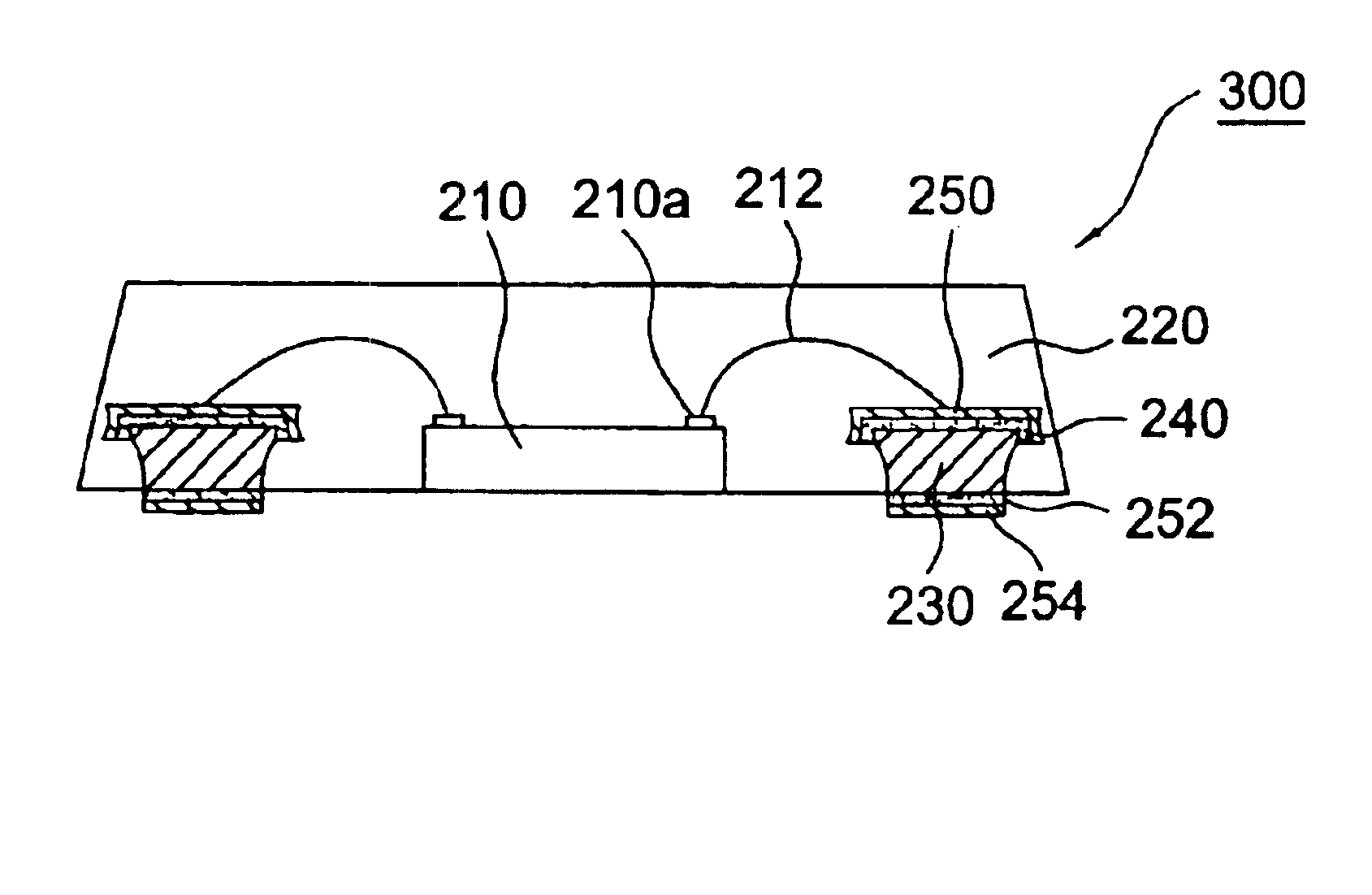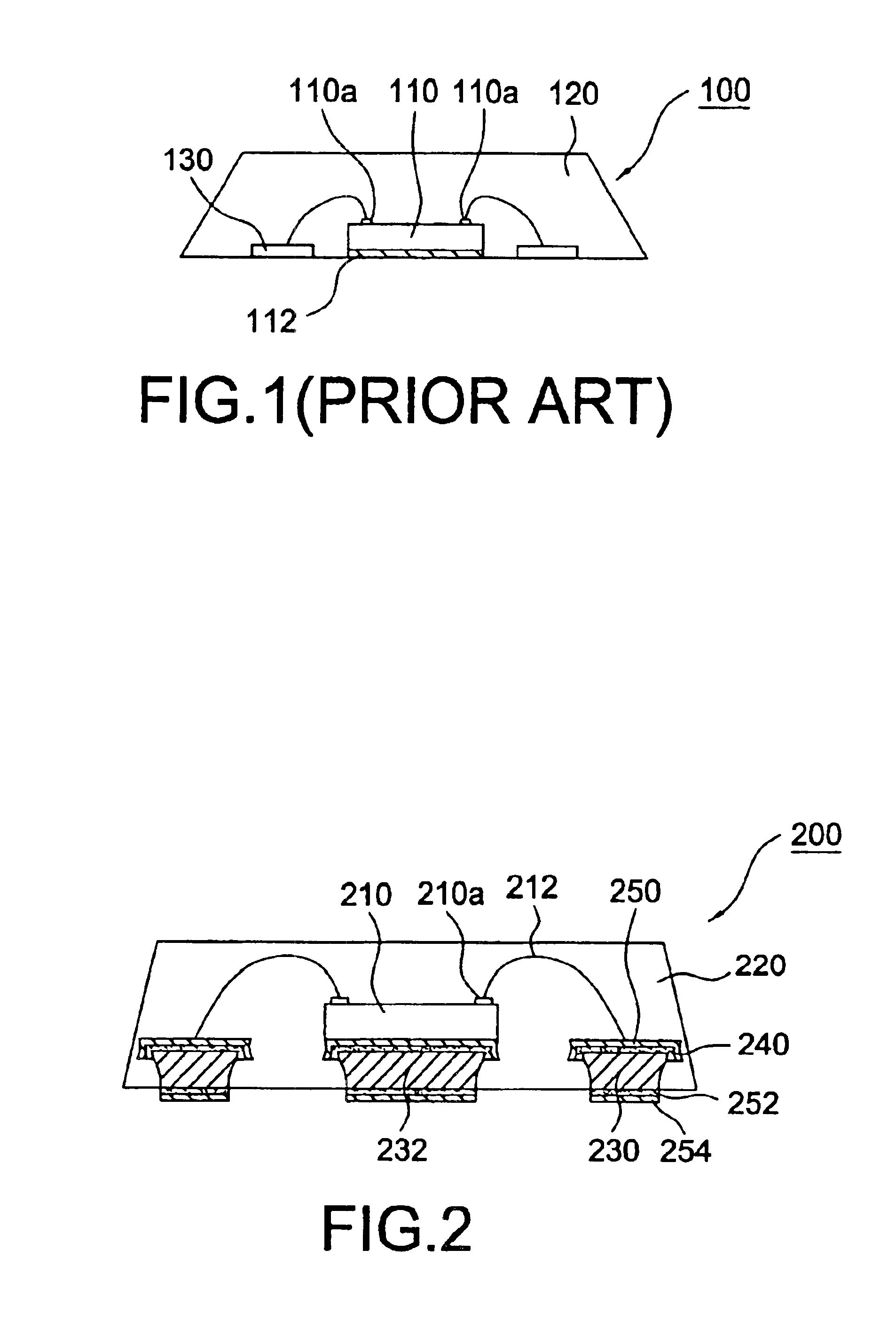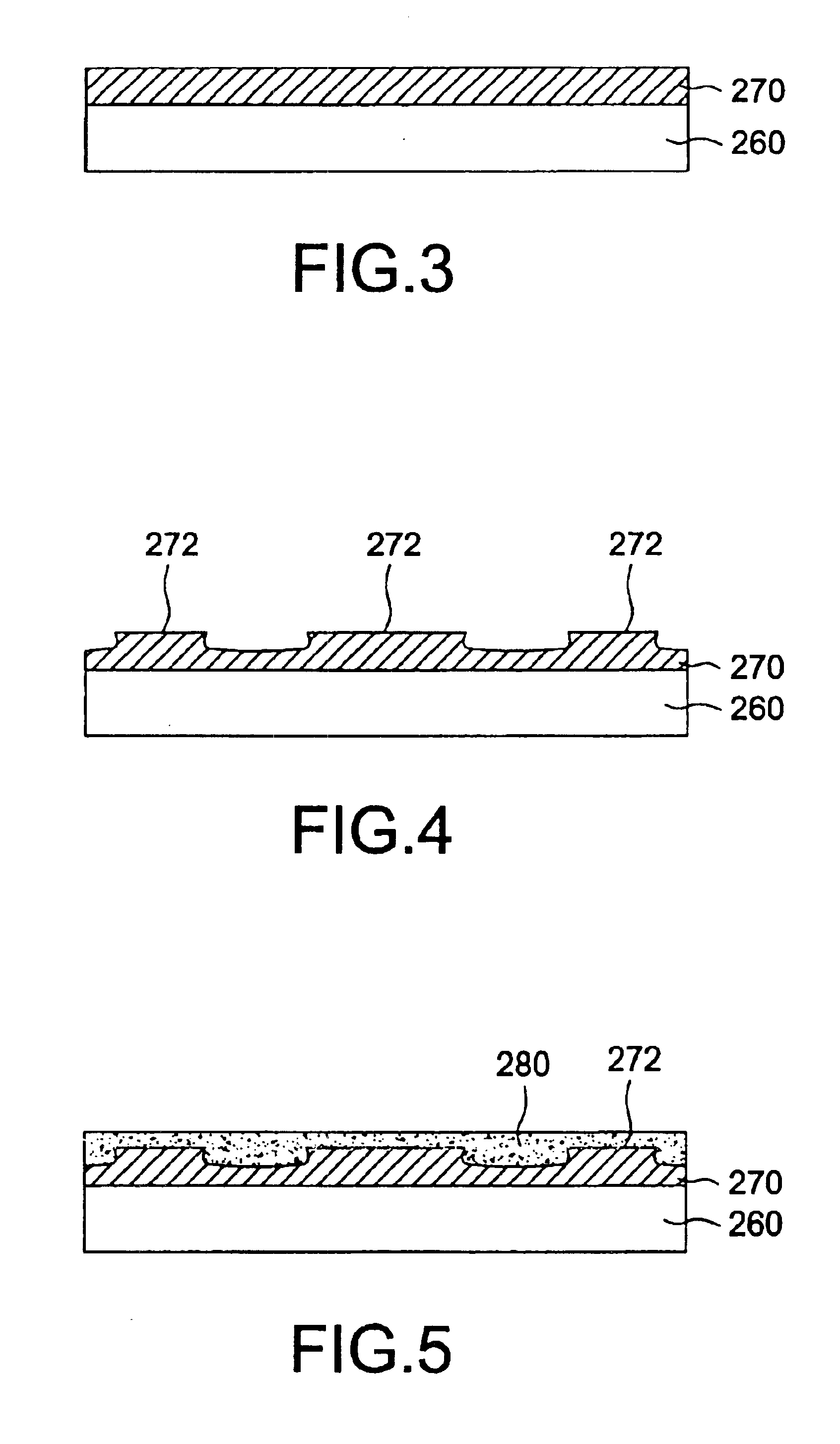Low-pin-count chip package and manufacturing method thereof
- Summary
- Abstract
- Description
- Claims
- Application Information
AI Technical Summary
Benefits of technology
Problems solved by technology
Method used
Image
Examples
first embodiment
FIG. 2 discloses a low-pin-count chip package 200 in accordance with the present invention comprising a chip 210 attached to a die pad 232 by either a conductive adhesive layer or nonconductive adhesive layer, e.g., epoxy (not shown). The active surface of the chip 210 is provided with a plurality of bonding pads 210a electrically connected to connection pads 230 through bonding wires 212. The connection pads 230 are arranged at the periphery of the die pad 232. The connection pads 230 and the die pad 232 are exposed from the bottom of the package body 220 and both of them have a substantially tapering profile for enhancing the “locking” of the die pad 230 and the connection pads 232 into predetermined place in the package body 220 as well as prolonging the path and time for moisture diffusion into the package 200. A package body 220 is formed over the semiconductor chip 210 and the connection pads 230.
Preferably, the die pad 232 and the connection pads 230 are provided with a metal...
second embodiment
FIG. 11 discloses a low-pin-count chip package 300 in accordance with the present invention comprising a chip 210 sealed in a package body 220. The chip package 300 is substantially identical to the chip package 200 of FIG. 2 with exception that the die pad 232 is skipped and the adhesive layer (not shown) is directly exposed from the package body 220.
FIGS. 12-15 illustrate a method of making the low-pin-count chip package 300 according to a second embodiment of the present invention.
Referring to FIG. 12, a metal layer 270 is laminated on a sheet carrier 260 and the metal layer 270 is half-etched to form concavities at predetermined positions thereof. Projections 272 not etched in the half-etching process will form the connection pads 230 afterward.
Referring to FIG. 13, a photoresist layer 280 is formed on the metal layer 270 and half-removed such that only photoresist within the concavities is left. It is noted that projections 272 are substantially exposed from the remaining photo...
PUM
 Login to View More
Login to View More Abstract
Description
Claims
Application Information
 Login to View More
Login to View More - R&D
- Intellectual Property
- Life Sciences
- Materials
- Tech Scout
- Unparalleled Data Quality
- Higher Quality Content
- 60% Fewer Hallucinations
Browse by: Latest US Patents, China's latest patents, Technical Efficacy Thesaurus, Application Domain, Technology Topic, Popular Technical Reports.
© 2025 PatSnap. All rights reserved.Legal|Privacy policy|Modern Slavery Act Transparency Statement|Sitemap|About US| Contact US: help@patsnap.com



